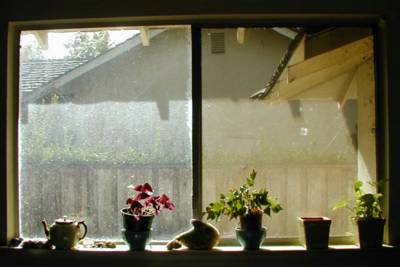When I regularly made films and videos, I saw a three-part sequence to most compositional strategies:
1. Collecting the elements to use
2. Editing/modulating the elements
3. Projecting/presenting the piece.
The problem I saw was to make each stage creative, so that none was assumed or just mechanical. So collection for me was to always have a camera with me, shooting what appeared between me and the world, and the real finds were exposures that had an existence and received meaning only as it was captured through a set f-stop, shutter speed and lens length.
The edit was a juxtapositioning of elements, so the collection of stuff could be staged for the presentation, but not necessarily fixed for that presentation.
The projection could involve many aspects: what you projected onto, the relationship between projection speed and previous collection speed, image against image and sounds, words against image, and all those Eisensteinian montage strategies.
The music I was making offered itself in the same way: capture or generate sounds, modulate and mix them through electronic modules, and when presenting again do a live mix through electronic modules. Today the heightened interest in electronic/acoustic performances underlines the power of creative integration of these three steps during performance.
Today, working with Premiere, with Sonar, and with The Mister Edgars, questions of strategy come up again for me. How each step of the creative process can be kept from being mechanized, and instead can speak to us as we engage it. And again: to have the engagement reveal the possibilities of beauty that we have always previously missed, so that we're more aware of it as we kick through the world.
After the parabola of a lifetime, I now reinterpret Duchamp and Cage for the central importance that beauty has in their work and writing. They needed to get away from using the word, Duchamp hated the concept of taste because, I believe, it represented how enculturation stopped perception. But now I understand beauty to be positioned as a pair of lights at the edge of what one understands, registering action at the present position of Vygotsky's zone of proximal development. It is that cliche'd culture only if one doesn't attend to it, try to make it speak, smear yourself in its sensuality so that you can through experience come to perception, and through perception bump those lights and the zone outside as you claim your site. Like a baby that laughs when it learns, we're charged with beauty when we perceive. Nothing to be ashamed of here, nothing to hide from. And the question's not "Why bother?".

